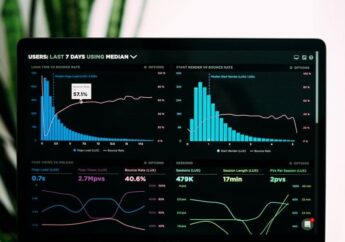Machine Learning For Customer Segmentation: Working, Implementation, Strategies, And More
by Soumava Goswami Information Technology Published on: 13 February 2024 Last Updated on: 08 May 2025

With rapid development in machine learning technology, businesses are experiencing changes in every area of their operations. One of the major areas where machine learning makes a lot of difference is customer segmentation. This technology is changing how businesses segment customers to offer their products and services accordingly. Today, machine learning is changing the way in which companies use their data.
In this article, you will learn about the significance of machine learning in customer segmentation. Furthermore, we will also discuss why it is important to use machine learning in customer segmentation. Next up, you will also learn about the different methods of using machine learning for customer segmentation. Finally, we will share with you some of the major advantages of using machine learning for such purposes.
Machine Learning For Customer Segmentation: A Brief Overview

The era of one-size-fits-all is gone as a customer comes across personalized products and services. This also creates better opportunities for businesses to become more creative in acquiring and retaining customers. Furthermore, it also prepares businesses for healthy competition in their respective marketplaces.
Importance Of Customer Segmentation
According to the Forbes Advisor,
“Customer segmentation involves grouping existing and potential customers based on shared characteristics. When you segment customers into different classes, you will better understand their needs, preferences and buying patterns. Your marketing and sales team can then tailor their efforts to reach out to your customers in the most fitting way.”
Customer segmentation means that the business is grouping its customers as per their characteristics. These characteristics include age, location, purchasing behavior, etc. This way, the organization gets to understand its customers better. Furthermore, it also helps the company to make strategic decisions better, when it comes to product growth and marketing.
Customer segmentation is one of the significant areas where businesses can take steps towards personalization. If a company does customer segmentation in the right manner, it will help a lot in the personalization of services. Here, the company will be able to make better decisions about product features, pricing, marketing strategies, and other factors. However, it can get overwhelming for businesses to do all those things manually.
Major Limitations Of Traditional Customer Segmentation
The following are some of the major limitations of traditional customer segmentation that enable businesses to implement machine learning:
1. Dealing With Really Broad Segments
In traditional customer segmentation, businesses deal with overly broad customer segments. Hence, the process fails to determine the complexity of the customer base of the given company. Furthermore, it is not humanly possible to understand the personal needs of every consumer.
2. Very Static
Traditional customer segmentation fails to determine various changes in the behaviors and preferences of customers. Hence, with changing times, the customer segmentation process becomes static or too slow to determine changes. On the other hand, it takes months to complete the customer segmentation process traditionally.
3. Limited Data
When you are using traditional customer segmentation methods, you will have access to a limited amount of data. This is because it is not humanly possible to go through large chunks of data, as it will take months, even years. Furthermore, many data analysts also focus on many superficial features and tend to ignore other deeper insights.
4. Requires A Lot Of Time And Effort
If you have tried customer segmentation, you might already know how time-consuming it is. Furthermore, you also need access to many resources, especially when you have many customers. Additionally, since there are humans involved in the customer segmentation process, it is prone to misjudgment and bias as well.
Why Need Machine Learning For Customer Segmentation?

The level of customer segmentation can vary depending on the amount of data you have. This is where the role of machine learning comes to the fore. Machine learning will provide you with methodologies that will help you analyze customer data. The technology helps you find insights and patterns faster and facilitates customer segmentation.
Machine learning technologies come with AI models that help you further in decision-making. Thus, you can be precise with your customer segmentation processes. Hence, machine learning makes customer segmentation easier than with conventional methods.
There are machine learning algorithms that help in dealing with specific problems. However, it is important to know which algorithm to use and when. For example, the k-means cluster algorithm is quite useful in dealing with customer segmentation problems. Furthermore, there are other clustering algorithms like, Agglomerative clustering, DBSCAN, and BIRCH, etc.
Why Use Machine Learning For Customer Segmentation?

According to IBM,
“Machine learning is an important component of the growing field of data science. Through the use of statistical methods, algorithms are trained to make classifications or predictions, and to uncover key insights in data mining projects. These insights subsequently drive decision making within applications and businesses, ideally impacting key growth metrics.”
One of the main things machine learning does is that it helps businesses deal with large chunks of data. Hence, with the help of data scientists, businesses can identify some of the most relevant business questions and the data to answer them. Furthermore, data scientists use programming languages like Python and R to use those machine learning algorithms to get more insights into data.
The following are some of the major reasons why machine learning is useful in customer segmentation:
1. You Can Save Time
Customer segmentation is a time-consuming process. It takes months to analyze large chunks of data to find patterns. Furthermore, the manual process also has issues with accuracy. However, with the introduction of Machine learning as a Service, it is easy to learn patterns and analyze large chunks of data faster. Hence, you will be able to free up a lot of time to focus on other aspects of the business.
2. Easy To Update Models
Machine learning algorithms update themselves as they come across new data and patterns. Hence, the overall performance of your AI model improves with time.
3. It Is Easier To Scale
With the introduction of cloud infrastructure, it is now easier to scale machine learning models. Furthermore, it has also become simpler to make changes and provide feedback for future changes.
4. You Will Have Better Accuracy
Machine learning offers you accuracy, which is not available with manual customer segmentation. This is because of human errors.
Different Methods Of Customer Segmentation With Machine Learning

The following are some of the top methods for using machine learning for customer segmentation:
1. Clustering Algorithms
With the help of these algorithms, machine learning models divide customers into different groups. The basis of those divisions is the characteristics and purchasing behavior of customers. For example, one can use the k-means Clustering method to find the k number of clusters in each dataset.
2. Decision Trees
By using these algorithms, the AI system uses a tree-like model to check the most important variables that affect customer behavior. This helps companies to determine which customers are more likely to respond to what type of products and marketing campaigns.
3. Neural Networks
Companies use these algorithms to evaluate complex relationships between customers’ needs and their buying behaviors. Hence, companies also implement neural networks to check patterns in various data that come from customers. This is because neural networks can do multidimensional analysis and can work much faster than humans.
4. Association Rule Learning
With the help of this model, businesses determine the major relationships between customer behavior and customer attributes. These include product preferences and buying habits. This algorithm helps businesses understand those products that customers frequently purchase together. Also, it helps evaluate the purchasing patterns of customers.
Machine Learning For Customer Segmentation: Major Advantages

JavaTPoint adds –
“Customer segmentation is a critical aspect of marketing strategy, and machine learning has become an increasingly popular tool for automating the process. By using machine learning algorithms to process vast amounts of customer data, companies can quickly identify new trends and patterns, target specific customer segments with tailored promotions, and make more informed marketing decisions.”
Apart from that, machine learning algorithms are also able to continuously learn and improve with time. This happens as those algorithms get access to new data and new insights into data. Hence, with time, machine learning algorithms become more accurate.
In addition to that, by using machine learning algorithms for customer segmentation, businesses can eliminate the need for manual data analysis. This helps in saving up a lot of time. Furthermore, the results of the analysis are accurate and less prone to errors. This holds true especially when the company is dealing with large data sets. Here, machine learning algorithms also automate the data analysis process and provide businesses with better results.
Application Of Machine Learning For Customer Segmentation

There are many tools available for performing customer segmentation, which businesses can use to analyze the buying behaviors of customers. By using such tools, businesses can collate data from a variety of sources. Furthermore, they will also be able to organize those data for effective customer segmentation.
The tools available for customer segmentation help in automating the technical process. This helps team members to have more time to focus on other tasks. This will help the business to grow in various areas. One of the most popular tools you can find is Qualtrics. With the help of this tool, you can fine-tune your product offerings to different customer segments.
According to the Forbes Advisor,
“Qualtrics is a customer segmentation software with machine learning and artificial intelligence (AI) capabilities to help you group customers into segments. Qualtrics also organizes studies on segments, determines optimal communication approaches for each segment and runs customer segmentation analyses.”
Here are some of the major things you must keep in mind if you want to implement machine learning for customer segmentation:
1. Make Sure You Are Collecting The Right Data
If you want to implement modern customer segmentation practices, you must learn to understand the value of data analysis. However, for effective data analysis through machine learning, you will need to ensure a proper infrastructure for data collection.
Here, you will need to prepare machine learning algorithms, which will help you to evaluate the purchasing patterns and behavior of your customers. Hence, you will need access to good and accurate data. You can do so by having access to a reliable data warehouse. As a result, data scientists can analyze data faster and more accurately.
2. Having The Latest IT System Architecture
For effective data analysis, you will need to have access to a single source of data. However, you will also need to have a good system architecture in place, which will help your data to flow quickly. Furthermore, you will also need to ensure that data flow is smooth and that it is not draining internal system resources.
In addition to that, you will also need to ensure that the system architecture gets updated as per schedules. However, you will need to consider the needs of the business.
3. Making The Most Of The Cloud Infrastructure
To carry out complex machine learning processes for customer segmentation, you will need to have access to a reliable cloud platform. This is because cloud servers will provide you with the necessary platforms where you can store large chunks of data. Furthermore, these platforms are scalable and versatile as well. Also, you will have good access to data and tools as well.
In addition to that, it will also be easier for you to train your machine-learning models. Hence, you will have better access to new customer insights. Thereby, you can use them for sales and marketing.
Wrapping Up
Hope this article was helpful for you in getting a better understanding of how to use machine learning for customer segmentation. If you want to implement machine learning models for your marketing practices, you will need good access to cloud platforms. Furthermore, you will also need to ensure a reliable system architecture is in place.
Do you have further suggestions on how to implement machine learning for customer segmentation? Consider sharing your ideas and opinions with us in the comments section below.
For More Business Related Articles Click Below!!



































































































